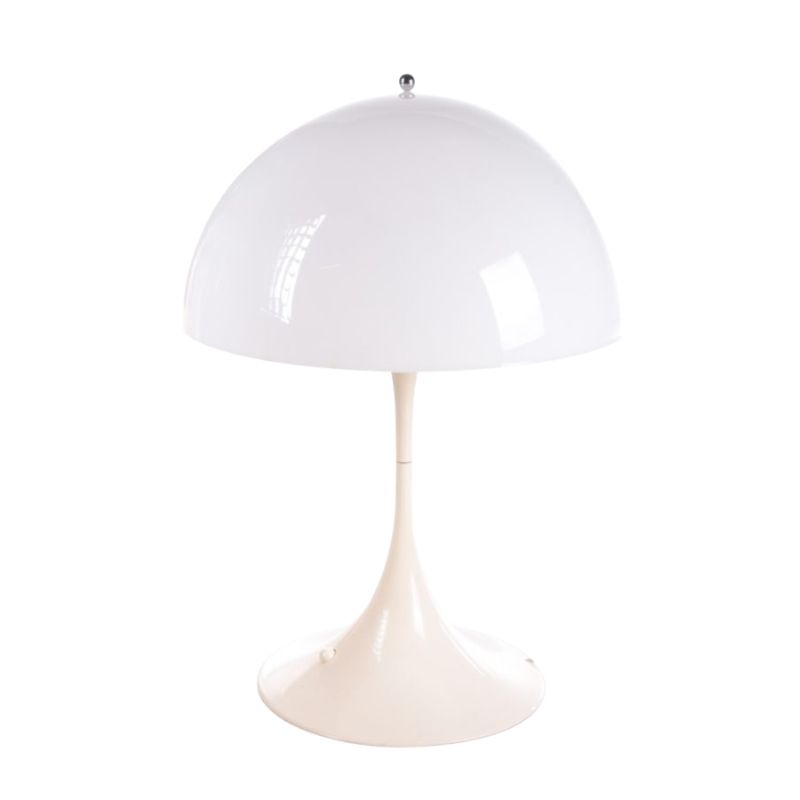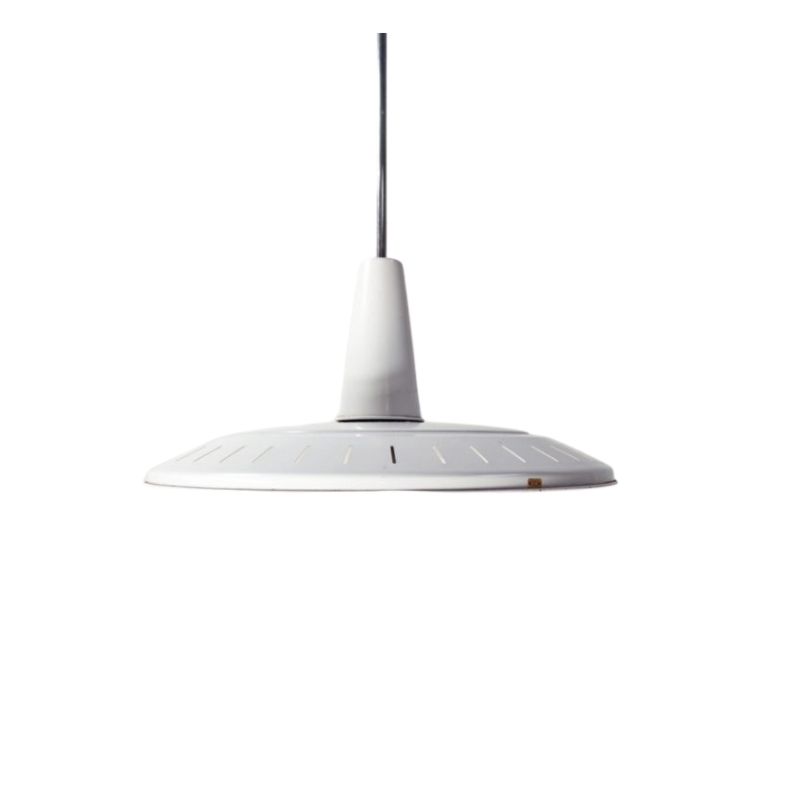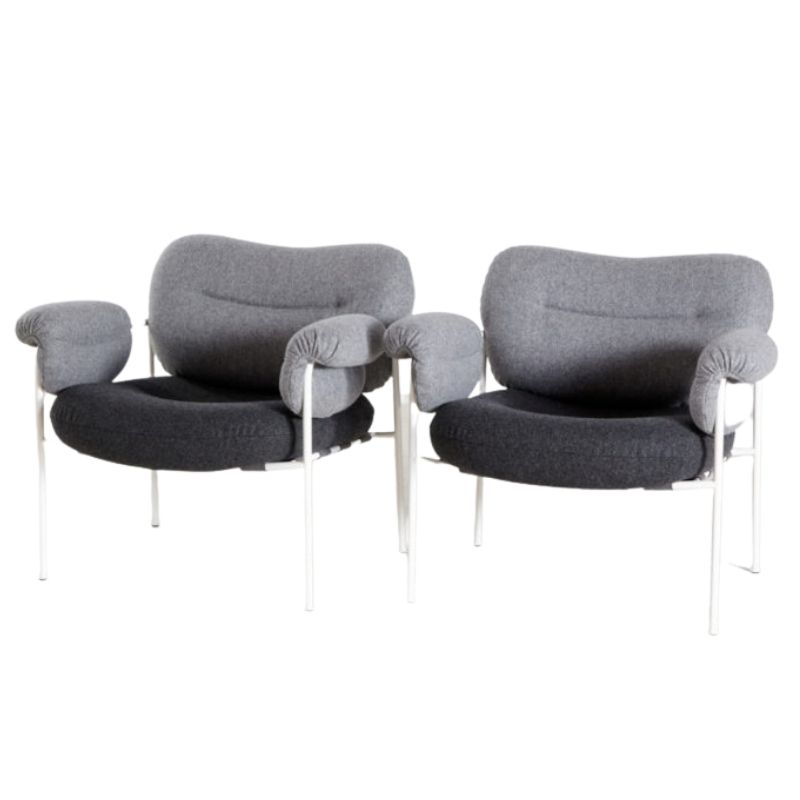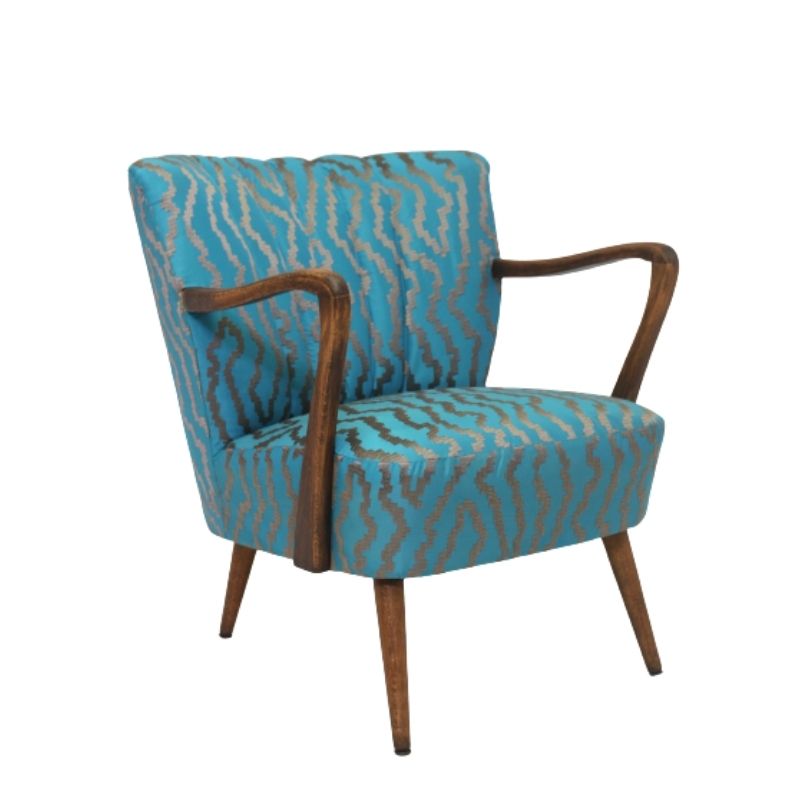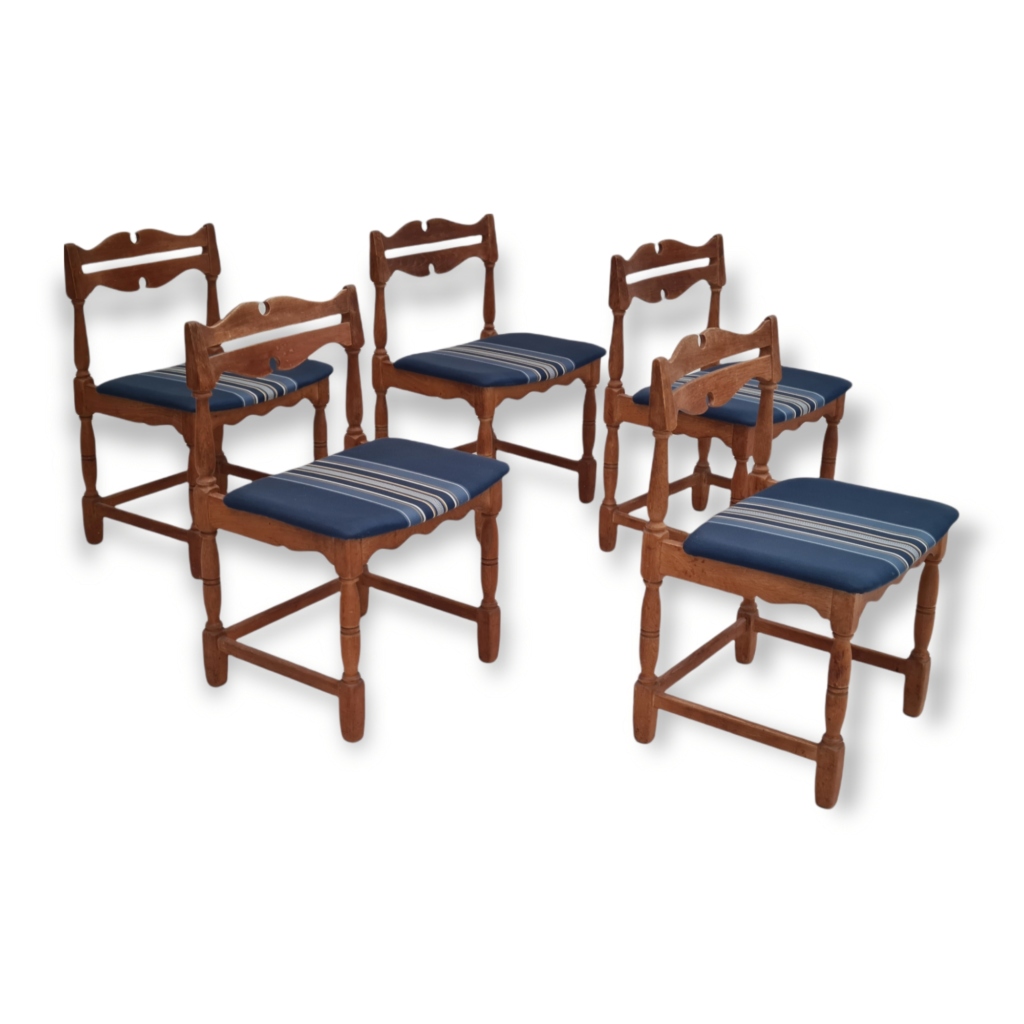Dear All,
I came across a small Wegner table, made by A. Tuck. The design is really nice, but the poor table must have undergone serious stress over the years. Before making an offer (I am sure the owner won't be happy about it, but in this case I think it will match the table value), I wanted to ask your opinion.
There are two cracks visible on the top surface, one visible due to the white color of the glue, and another crack that is more visible. It looks like these cracks are not crossing entirely the surface, but they stop at half or less of it. Do you think it is possible to put epoxidic glue in the cracks, send it, and go with teak oil and steel? Would it made a decent result?
There is a dent on the rim, which actually does not worry me as much as the cracks.
Finally, the design of the legs of this table requires that two wooden pins are keeping the two parts together. The two pins are not available, but I guess they could be remade.
Thanks,
Ernest.
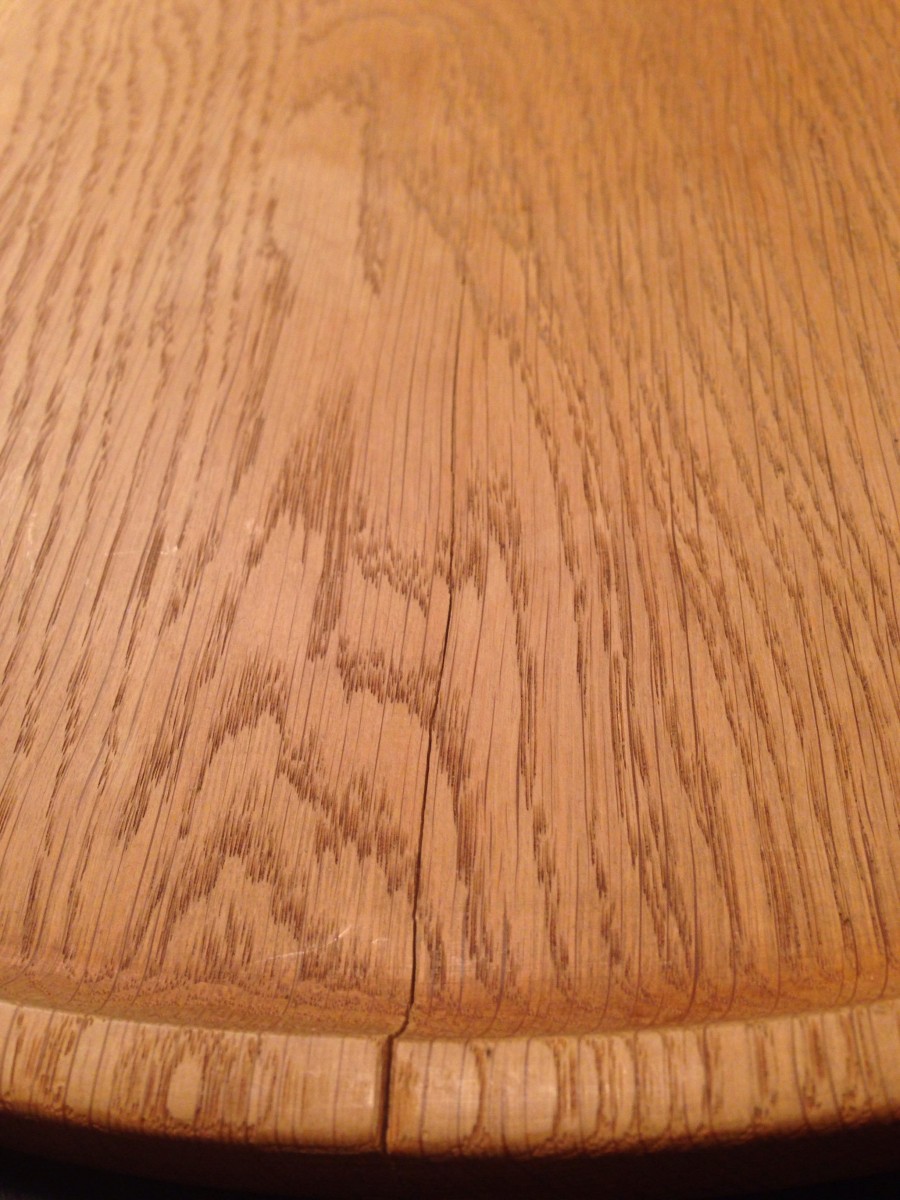 <img class="wpforoimg" src=" http://d1t1u890k7d3ys.cloudfront.net/cdn/farfuture/OkT7-iZ6OsZNLttKDs0JGJ
<img class="wpforoimg" src=" http://d1t1u890k7d3ys.cloudfront.net/cdn/farfuture/OkT7-iZ6OsZNLttKDs0JGJ
A couple of thoughts:
Simply putting glue, any glue, into the splits and then clamping them closed is not going to fix anything. The splits will reappear with the next dry season. And I cannot ever recommend epoxies for repair of fine furniture as they are extremely difficult if not impossible to remove.
If the table were mine, and the top were otherwise structurally sound, I'd try to remove the milky glue residue and leave things as they are. Wood moves, like it or not.
I'm a bit surprised that the boards comprising the top appear to be flat or rift-sawn rather than quartered and that their grain patterns are not especially well-matched.
It is White Oak by the way.
I would be extremely concerned that the crack gets broader toward the edge. This suggests to me that it may not close well. If it takes any significant force to close the cracks, that would be a very bad sign.
I think you need to figure out what caused these cracks. It is possible that the oak just spontaneously split, but that is extremely unlikely.
Since the pins are missing, it makes me think someone "modified" this piece. Was the top ever screwed to the base? That could easily have caused these splits. (the oak wanted to shrink but it was pinned in place by the screws, so it split in order to shrink).
Are there any dents or scrapes that would indicate the top was abused (dropped from the roof, used as a frisbee, etc)?
If you could explain why these cracks happened and it is due to something that will not happen again, it might be possible to patch the cracks and have it not crack again. It would be impossible to be certain. The wider the variation of humidity you expose it to, the more risk. It will NOT be possible to patch these cracks invisibly, as a consequence this table will forever bear the scar of this and value will follow accordingly. And it is very unfortunate that the cracks have been poorly repaired. This will make a good repair job significantly more difficult, and the outcome much worse. The missing chip in the rim will always be very obvious.
I never use epoxy for anything. The pins can be re-made. If someone gifted me the table, I would take it. Tktoo is very wise.
Leif, sometimes it's just impossible to predict how lumber will react to sizing and shaping. There are often clues in grain patterns and growth rings, but I've had seemingly stable pieces of kiln-dried stock take off on me after ripping. You never really know how relieving potential internal stress will resolve itself until a freshly-cut piece reattains equilibrium which can take days, weeks, or longer. Production schedules don't allow for this.
Absolutely, I agree. Especially after ripping a board that has found an equilibrium in itself and then been planed flat and square, it is entirely possible to discover that the two halves of the board you are ripping are no longer in equilibrium. I just love it when that happens on the table saw and the board grabs the blade like they are chopsticks. There is usually an obvious cause for these sorts of misbehavior, at least if you know what you are looking for. Ambient humidity changes are a leading cause that most people do not see. Obviously cutting boards is another.
Generally there is no reason it would take 50 years for equilibrium to be found. Usually this problem would arise with an improperly dried board and It would misbehave as it dries quickly. In most cases this would be measured in weeks at most. So maybe it happened a few months after the owners received the piece and they never did anything about it. It wasn
Hi!
Thank you both for the very nice and interesting comments. I asked the owner about the origin of the cracks, and she said that they appeared because of the heating of the flat. She said they discovered them just by removing the pile of newspapers were put on the table. Whether this is true, I do not know. Also the dent on the side is suspicious.
But there are no signs of screws being placed on the structure below the dish... see picture.
Best wishes,
Ernest
That actually might be a reasonable explanation. The heating exposed the bottom of the table to very dry air. The newspapers on top of the table isolated it from the very dry air. The table top would have wanted to crown (high in the center).
Right here it is possible that the were enough internal stresses to crack the boards, but I would say that most boards would not have cracked yet.
If the stack of newspapers were quite high and heavy, it could have provide enough weight for the table top to split itself with any piece of wood, no matter how mellow.
And the crowning could have popped a chip out of the rim.
This is a situation where a teak top would have been much more dimensionally stable and might have survived this. And these pieces oak might have had a lot of internal stresses to begin with. This is what tktoo was saying.
If you want to redeem this lovely broken table as best as I can be redeemed, you have my utmost respect for that. Unless you get paid to do it, this table is unlikely to be worth the time.
You could commission a woodworker to make one for you. It could be done on a lathe, turned like a wide flat bowl. It could also be done with a router. Some woodworkers flatten large solid table tops with a router that is in a contraption so that it can move on rails in a flat plane. You just work the router back and forth over the wood and it cuts it flat. In this case, the woodworker would probably cut the circle first and then cut out the center with the router.
You would just have to ask around. I would probably start with a bowl turner and see what he would charge to laminate up some oak and turn it into a flat bowl. White oak, quarter sawn.
Not to argue, but it would require less effort (or expense) to properly repair the original top if its current condition is unacceptable.
I'm a big believer in keeping components original whenever possible and/or practical. I also consider competent repairs evidence of age, use, and respectful care. Details that, to me, often make a piece unique and sometimes charming in a je-ne-sais-quoi sort of way.
To be clear: I would NOT get rid of the original top. If you have a new top made, keep the old top, and supply it with the new top and the table if you ever decide to sell it.
And yes, commissioning a new top will not be cheap, unless you happen to know a good woodworker who works for conversation and beer.
Letting a piece be what it is, unique among its peers despite being a production piece at birth, is the humane approach in my view, given sufficient damage and wear.
I, too, would want to learn what a straight-edge would tell us about the present flatness of the top.
Leif writes: "You do point out a serious concern here though. As soon as the crack happens the wood can start to warp in new ways that aren
SDR: yes I have taken the cup out of a solid teak table top. It is solid wood so it may well have moved again, but I doubt it was back to cupped just because. There is cause and effect at work here even if it is hard to see. It is like medicine; it is all about the dosage and knowing what does what.
There is another case of a pair of solid teak leaves for a table. I accidentally stored them on top of each other with no air space between. They cupped away from each other after a few weeks. I was very concerned at first but they flattened right back out and stayed that way. I didn't have to do anything.
My lathe rotates so I don't need to worry about swing for this sort of thing.
Thanks, Leif. Interesting that your tops cupped (temporarily) away from each other, as that is just what virtually all sheets of plywood do, at the top or bottom of a unit. And, they usually don't go back. But solid wood is different. In both cases, of course, the axis of the bend is parallel to the grain (or surface grain) of the piece of material.
We learn (or relearn) the hard way to cover -- or completely uncover -- both faces of flat panels when storing them, even for a short period.
EDIT: I believe I've seen plywood and other sheet goods bow away from a surface, in both directions. I guess that would be a new category of warpage, namely "bowl" ?
If you need any help, please contact us at – info@designaddict.com



